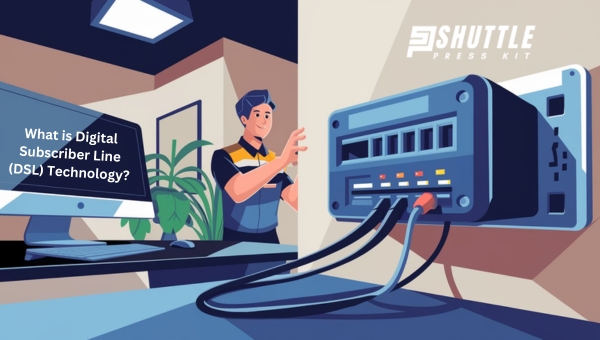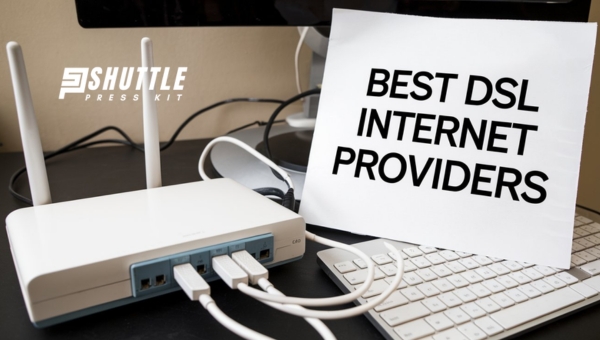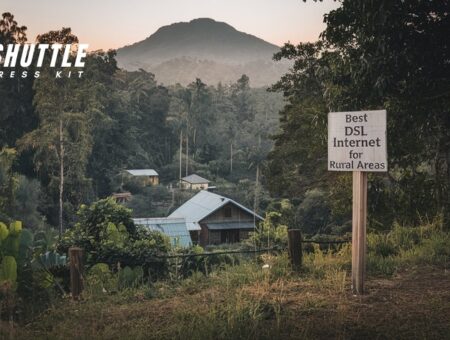When I think about the best DSL internet for rural areas, it’s like searching for a needle in a haystack. For folks living away from the hustle and bustle of city life, finding reliable and fast internet can feel like striking gold.
It’s a common struggle that many of us face, but fear not! I’ve journeyed through the world of rural internet to bring you insights that can change your online experience.
Choosing the best DSL internet provider in rural regions comes down to two critical factors: availability and speed. In these areas, options might be limited, but there are still providers offering services designed to meet your needs without breaking the bank.
Keep an eye out for companies known for their reliable connections and customer service excellence; they often stand out as the lifesavers for our digital demands in remote locations.
What is Digital Subscriber Line (DSL) Technology?
Digital Subscriber Line (DSL) technology is a robust method of delivering high-speed internet access via existing telephone lines. Unlike older internet technologies, such as dial-up, DSL allows for the simultaneous use of the Internet and telephone line — meaning you can browse the web while making phone calls.

This innovation represents a significant leap in telecommunications, offering both reliability and widespread availability. Here’s an outline of its key components:
- High-Speed Internet Over Telephone Lines: DSL utilizes the copper wires of traditional telephone lines to deliver internet connectivity without disrupting telephony services. This dual-functionality is a fundamental characteristic distinguishing it from earlier internet access methodologies.
- No Need to Occupy Phone Lines: One of the most pronounced advantages over dial-up is that DSL does not tie up phone lines. Users can access the internet and use their home phone simultaneously.
- Widespread Availability: Due to its use of existing telecommunication infrastructure, DSL internet service covers vast areas, providing many users with accessible high-speed internet—especially valuable in regions lacking cable or fiber optic options.
- Variable Speeds Depending on Service Tier and Distance From ISP Infrastructure: The speed for DSL connections can range significantly based on your chosen service plan and your physical distance from the service provider’s facilities. Typically, closer proximity means faster speeds.
While it may not always match the highest speeds seen with newer technologies like fiber optics, DSL remains an important player in offering reliable and accessible high-speed internet to diverse populations across many regions.
Also Read: How to Reboot Your Starlink Internet? – Quick Fixes & Tips
6 Best DSL Internet for Rural Areas
DSL (Digital Subscriber Line) internet leverages existing copper phone lines to provide high-speed internet access, distinguishing itself as a widespread and generally affordable option.

Let’s explore some of the top DSL internet providers, highlighting their key offerings and strengths.
AT&T
AT&T is recognized as the best overall DSL internet provider, offering plans with speeds up to 100 Mbps for $55 per month. Its extensive availability across the U.S. makes it a popular choice, especially in areas where other options are limited. AT&T also provides no-contract plans, though it does impose data caps on non-fiber services.
CenturyLink
CenturyLink is ideal for rural areas, providing DSL plans starting at $50 per month with speeds ranging from 20 to 100 Mbps. Its no-contract policy and unlimited data make it a strong contender for users seeking reliable service without long-term commitments. However, installation fees may apply.
Verizon
Verizon’s DSL service offers speeds up to 15 Mbps for $49.99 per month and includes unlimited data. While its coverage is more limited compared to AT&T, Verizon still serves many customers with dependable service and free installation in most cases.
EarthLink
EarthLink provides DSL plans starting at $45 per month, with speeds around 25 Mbps. Its service is highly variable based on location, but it is known for solid customer support and a commitment to no data caps, making it a viable option for many users.
Brightspeed
Brightspeed, a newer player, has taken over networks from Lumen Technologies and offers competitive pricing and speeds. While specific plans may vary, it aims to provide reliable DSL service in markets across the eastern U.S., making it a noteworthy option for those in its coverage area.
Ziply Fiber
Despite its name, Ziply Fiber also offers DSL service, starting at $40 per month. It serves parts of the Northwest and provides variable speeds. While not as widely available, it is a cost-effective choice for users in its service regions seeking basic internet connectivity.
Also Read: Amazon’s Project Kuiper vs Starlink: Showdown Unpacked
Can I get DSL internet in any rural area?
DSL availability in rural areas depends on the proximity to the service provider’s infrastructure, but it is widely accessible.
Is DSL internet fast enough for streaming and gaming in rural areas?
While DSL may not match urban internet speeds, it often provides sufficient bandwidth for streaming and casual gaming in rural settings.
How does weather affect DSL internet connectivity in rural regions?
DSL internet is relatively stable, but extreme weather conditions can affect the quality of the connection temporarily.
Can I use DSL internet for home office work in a rural area?
Yes, DSL internet is typically adequate for most home office tasks, including video conferencing and large file downloads, depending on your chosen plan.
Also Read: Starlink Roam Review – Everything You’re Curious About
Conclusion
Finding the best DSL internet for rural areas can be a daunting task given the often limited options available. However, by carefully considering factors such as speed, reliability, customer service, and price, rural residents can find a DSL provider that best suits their needs.
The key is to prioritize what matters most to you in an internet service and to research thoroughly which providers serve your area. While DSL may not always offer the high speeds available in urban areas, advancements in technology are continually improving the service.
